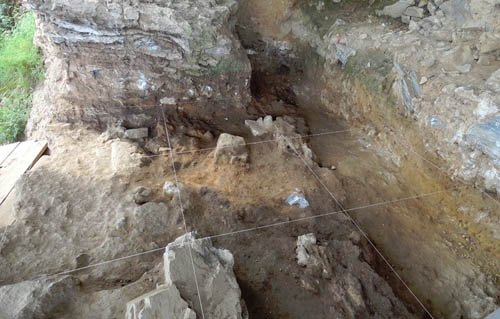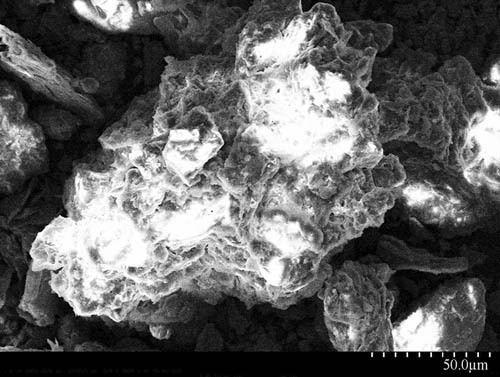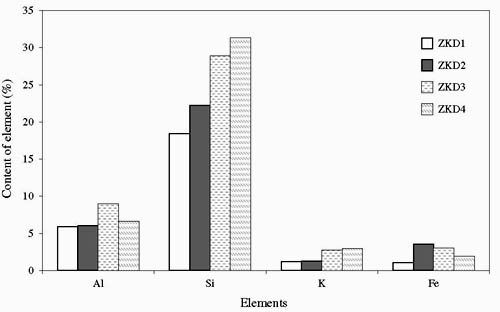| Location: Home > Research > Research Progress |
| New Analyses Verify the Use of Fire by Peking Man |
|
Zhoukoudian Locality 1 in northern China has been widely known for the discovery of the Middle Pleistocene human ancestor Homo erectus pekinensis ( known as Peking Man ) since the 1920s. By 1931, the suggestion that the Zhoukoudian hominins could use and control fire had become widely accepted. However, some analyses have cast doubt on this assertion as siliceous aggregate (an insoluble phase of burned ash) was not present in ash remains recovered from the site. New analyses of four ash samples retrieved from different positions of Zhoukoudian Locality 1 during the excavations carried out in 2009, present evidence for the controlled use of fire by Peking Man, according to an article published in the journalof Chinese Science Bulletin 59(3). "At present, the key point of the debate over the intentional use of fire by Homo erectus pekinensis at Zhoukoudian is whether or not siliceous aggregate (an insoluble phase of burned ash) is present in ash remains recovered from the site”, said study coauthor Dr. GAO Xing, an archaeologist at the Institute of Vertebrate Paleontology and Paleoanthropology (IVPP), Chinese Academy of Sciences. In order to examine whether siliceous aggregates and potassium are present in the insoluble phase of the ash, GAO Xing and his team collected four samples from different locations at the site with one sample from Layer 6 (ZKD4) and three from Layer 4 (ZKD1, ZKD2, and ZKD3). Once the presence of siliceous aggregates and potassium is identified in the ash deposits, the in situ use of fire can be extrapolated. This method has been used to confirm the presence of anthropogenic fire use at other early sites. The analyses detect a large number of sintered agglomerates in the insoluble residual phases of the samples. Furthermore, the analyses indicate that the elements associated with siliceous aggregates (Al, Si, K, and Fe) are present in all four samples. The material composition analyses show that the substances in the insoluble phases of the ash are mainly SiO2, elemental C, and silicates. Elemental carbon is present in the ash, and the insoluble phases contain 1.21 %–2.94 % by weight of elemental K. Thus, the test results clearly indicate the presence of elemental C, elemental K, and siliceous aggregates in the insoluble phases of the ash from Zhoukoudian Locality 1, providing strong evidence of the in situ use of fire by Homo erectus pekinensis. Recent age determinations for the Zhoukoudian sequence have shown that Homo erectus pekinensis seems to have first occupied Locality 1 some 770,000 years ago, when climatic conditions in North China were relatively cold, perhaps prompting Homo erectus pekinensis to obtain more reliable sources of heat to defend against the extreme cold, and implying that through the production and management of fire, Middle Pleistocene hominins in North China survived conditions colder and less conducive to human occupation than at present. "Siliceous aggregates and elemental C have been identified as definitive indicators of in situ fire. Therefore, the location and quantities of the samples analyzed before might have been insufficient to draw overall conclusions about the site as a whole. The results of our experimental studies have proven the presence of siliceous aggregates and potassium as well as elemental C in the insoluble phase of the ash. These results should provide additional supporting evidence of in situ controlled use of fire by Homo erectus pekinensis at Zhoukoudian Locality 1”, said lead author Dr. ZHONG Maohua, Institute of Transportation Safety, China Academy of Safety, Science and Technology. This work was mainly supported by the Strategic Priority Research Program of the Chinese Academy of Sciences, and was identified as a Major Basic Research Project of the Ministry of Science and Technology of China.  Fig.1 Excavation spot in Zhoukoudian Locality 1. The excavation has been carried out since 2009. (image by ZHONG Maohua)  Fig.2 Photomicrograph of Sample ZKD3. The photo illustrates the sintered agglomerate in the insoluble phase under 9600 magnification. (image by ZHONG Maohua)  Fig.3 Si, Al, Fe, and K contents of the insoluble phase of the four ash specimens. (image by ZHONG Maohua) |